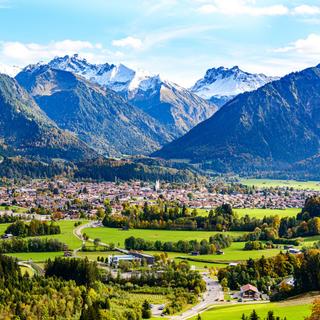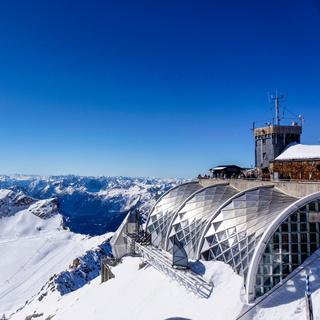Ulm weather and climate in 2025
Day
2 °C
Night
-3 °C
Sea
0 °C
Precipitation
47 mm
in month
Rainy days
13 days
in month
Daylight
9 hours
average
Sunshine
2 hours
average
Humidity
91 %
Weather charts for Ulm
Find more destinations like this
Closest destinations for Ulm
Closest cities for Ulm
Weather overview for Ulm
Weather overview
Ulm, nestled along the banks of the Danube, is distinguished by its variable continental climate. Throughout the year, temperatures fluctuate significantly, from brisk winter lows of -3 °C (26 °F) to pleasant summer highs of 24 °C (75 °F). Though Ulm doesn't experience a distinct rain season, rainfall peaks in summer, with June seeing an average of 91 mm (3.58 in). On sunny days, Ulm can bask in up to 8 hours of sunshine in July, while winter days offer a more modest 2 hours in January. The mild humidity levels in summer, averaging 72 %, make outdoor activities enjoyable.
January weather
January in Ulm greets you with a winter chill, as night temperatures dip to an average low of -3 °C (26 °F). Despite the cold, the skyline is often brightened by up to 2 hours of sunshine, offering a reprieve from the short, dusky days.
February weather
As February's frost continues, Ulm sees a slight increase in daytime warmth with temperatures rising to 4 °C (39 °F), while nights remain cold. Ulm's weather starts to gradually shift, hinting at the impending spring.
March weather
March marks the transitional period in Ulm, where the thaw of winter brings daytime temperatures to a more comfortable 9 °C (48 °F). The prolonged daylight, lasting for up to 4 hours, heralds the beginning of spring.
April weather
With the arrival of April, Ulm's days continue to warm up to an average high of 14 °C (57 °F). Light spring rains contribute to the blooming of the city's numerous parks and gardens.
May weather
May sees Ulm bask in the full bloom of spring, with a notable rise in temperature to 19 °C (66 °F). The city witnesses a mix of rain and shine, with generous sun hours offering perfect conditions for picnics and outings.
June weather
June heralds the onset of summer in Ulm, with temperatures peaking at 22 °C (71 °F). Though warm, the month doesn't shy away from rainfall, receiving an average of 91 mm (3.58 in), fostering the city's verdant landscapes.
July weather
July is the zenith of Ulm's summer with the mercury cresting at an average 24 °C (75 °F). It is a time when the sun graces the city for up to 8 hours, inviting residents and visitors alike to enjoy the Danube's breezes.
August weather
August slightly dials back the heat with temperatures averaging 23 °C (74 °F), but maintains its summer charm. With extended daylight and occasional rains, Ulm's green spaces remain a refreshing escape.
September weather
September in Ulm ushers in the first whispers of autumn, with temperatures reaching a comfortable 19 °C (66 °F). The declining sun hours signify the change in seasons, setting the stage for fall’s cooler embrace.
October weather
October in Ulm brings a crisp change, with the fall colors in full display and the temperatures dropping to an average of 13 °C (56 °F). The wind whispers through the city streets, carrying the scent of harvested fields and spiced drinks.
November weather
November sees Ulm preparing for the winter to come. The temperature continues its descent to a daytime average of 7 °C (44 °F), with the approaching holiday season adding a sense of warmth and festivity.
December weather
December in Ulm is embraced by the festive cheer, though accompanied by a chilly average high of 3 °C (37 °F). The twinkling lights reflect off the Danube, complementing the short daylight hours.
FAQs
What kind of temperatures can I expect in Ulm during January?
January in Ulm is quite frosty, with daytime temperatures reaching just about 2 °C (36 °F), suggesting a need for warm layers and insulated outerwear.
Is February still cold in Ulm?
Definitely, February still holds onto the wintry grip with average high temperatures of 4 °C (39 °F) – be sure to bundle up if you're outdoors.
What changes can I expect in March weather in Ulm?
March is a breath of fresh air as the chill recedes, allowing for daytime temperatures around 9 °C (48 °F) and increasingly lengthier daylight hours.
How much does it warm up in Ulm during April?
April brings a pleasant change, with the mercury climbing to daytime highs near 14 °C (57 °F), perfect for enjoying outdoor cafes and riverside walks.
Do temperatures in Ulm become comfortable in May?
Absolutely, May offers a warm embrace with highs around 19 °C (66 °F), shedding the layers and welcoming t-shirts and light jackets.
Can I expect warm weather in Ulm in June?
Certainly, June ushers in warm weather with daytime highs of 22 °C (71 °F), creating an ideal ambiance for summer festivities.
How hot does it get in Ulm in July?
July stands as the warmest month in Ulm with pleasant highs of 24 °C (75 °F) – perfect for al fresco dining or a leisurely swim in a nearby lake.
Does the temperature drop much in Ulm during August?
August in Ulm offers a subtle respite from the heat with daytime temperatures averaging 23 °C (74 °F), still warm enough for shorts and t-shirts.
Is September still warm in Ulm?
September remains fairly warm with usual highs of 19 °C (66 °F), allowing for continued enjoyment of outdoor activities and open-air events.
What is the average daytime temperature in Ulm during October?
Daytime temperatures in Ulm cool down to a mild 13 °C (56 °F), suggesting it's time to bring out the cozy sweaters and jackets.
Is November in Ulm typically cold?
As winter approaches, November in Ulm cools to an average high of 7 °C (44 °F), signifying it's time to dust off the winter coats and woolly hats.
Are Ulm's December days very cold?
December days in Ulm are cold with an average high of just 3 °C (37 °F), so layering up is key for those brisk outdoor markets and winter walks.
We make the most from 40 years of historical weather data to predict the best weather conditions.
Deciding on where to go for a holiday is hard sometimes. Get inspired by the most popular destinations.
We aggregate data from combining multiple weather sources to ensure accuracy of the highest order.







